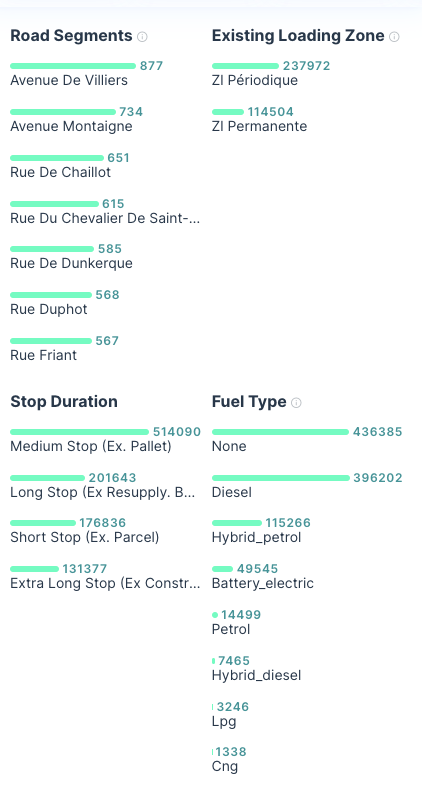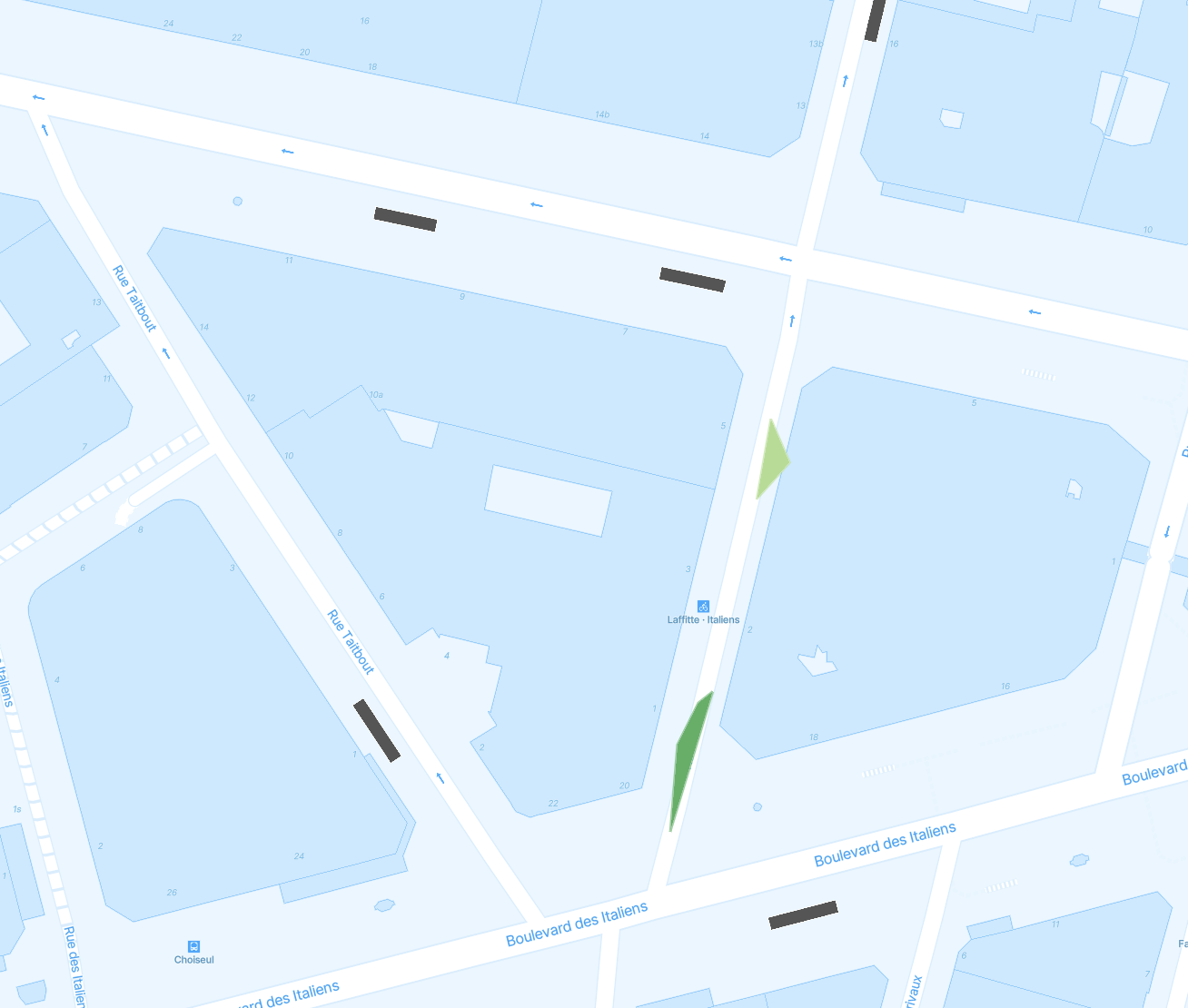Vianova's Intelligent Loading Zones
Vianova works with several fleet telematics providers generating data about comercial vehicle stops. We use this data to understand behavior at loading zones in your city, as well as to make recommendations for where loading zones should potentially be added to support the efficient movement of goods.

Definitions
Stop Type
A projected purpose of the stop, based on the duration of the stop:
- Short Stop: < 5 minutes (example, a parcel delivery)
- Medium Stop 5 > and < 20 minutes (example, a pallet unloading)
- Long Stop 20 > and < 60 minutes (example, a building resupply)
- Extra Long Stop 60 > and < 120 minutes (example, construction services)
Duration
The number of minutes a stop event (ignition off to ignition on) occurs
Hour of Day
The hour (0-24) which the stop occurs
Day of Week
The day (1-7, Sunday =1 ) which the stop occurs
Fuel Type
(If known) the type of fuel (diesel, electric, etc) used by the vehicle making a stop.
Calculating Smart Loading Zones
Vianova uses a data science model to create a layer of loading zone suggestions. These suggestions should be ground-truthed, but represent statistically interesting areas where stop events tend to be clustered in reasonable proximity to one another. The parameters for a suggested stop that Vianova uses include:
- Excluding observations which occurred at or within 20 meters of an existing loading zone
- Suggesting zones with a total area of no more than 40 sq meters
- Suggesting zones no less than 20 m away from a current permanent loading zone, and no less than 20 m away from another suggested loading zone.

Depending on the priorities of the user, the algorithm can be modified to include proximity to deliver locations (such as grocery stores), avoiding streets with high vehicle counts, or other additional parameters.
Updated 2 months ago
